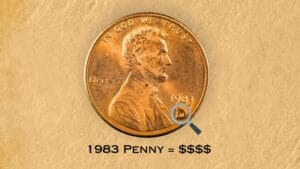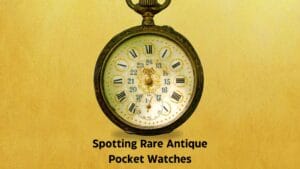If you love carpentry, you must use various tools and handsaws. From jab saws to chain saws, the list of saws is quite long! But, if there’s one saw that is meant to stay, it’s a cross-cut one. Now you may ask why!
Well, crosscut saws have their roots back in the 15th Century. So, these antique, sharp saws are in demand even today! Thus, your crosscut saw might be much more precious than you think! So today, I’ll help you identify your crosscut saw for better returns!
Key Takeaways
- You can spot vintage crosscut saws by their thick, straight blades and compact teeth. You can also look for stamped patents to track and age them correctly.
- Cross-cut saws with Oak, Walnut, or Beech handles are old and valuable. But even crude alloyed steel saws fetch good returns.
- Pick crosscut saws with a stone, copper, or iron blade for the best valuation.
- Crosscut saws with plain or champion teeth are in high demand. However, if your piece has compact teeth and perforations, the cost may increase!
Key Features of Vintage Crosscut Saws
Vintage crosscut saws look like any regular chisel saws. So, if you want to spot one, you must observe its bent teeth and straight blades.
But that’s not all! Here are some more features to spot an old crosscut saw easily.
- Slanting teeth and jagged edges, like a row of pointed spears placed side to side
- Round, wooden handles with hand-polished surface or lacquer
- Taper ground shape with a narrow toe and wider blade heel
- Large 16-17” blade plate with a D-shaped handle and screws
- Etched blades with a clear maker stamp and patent temper at the base
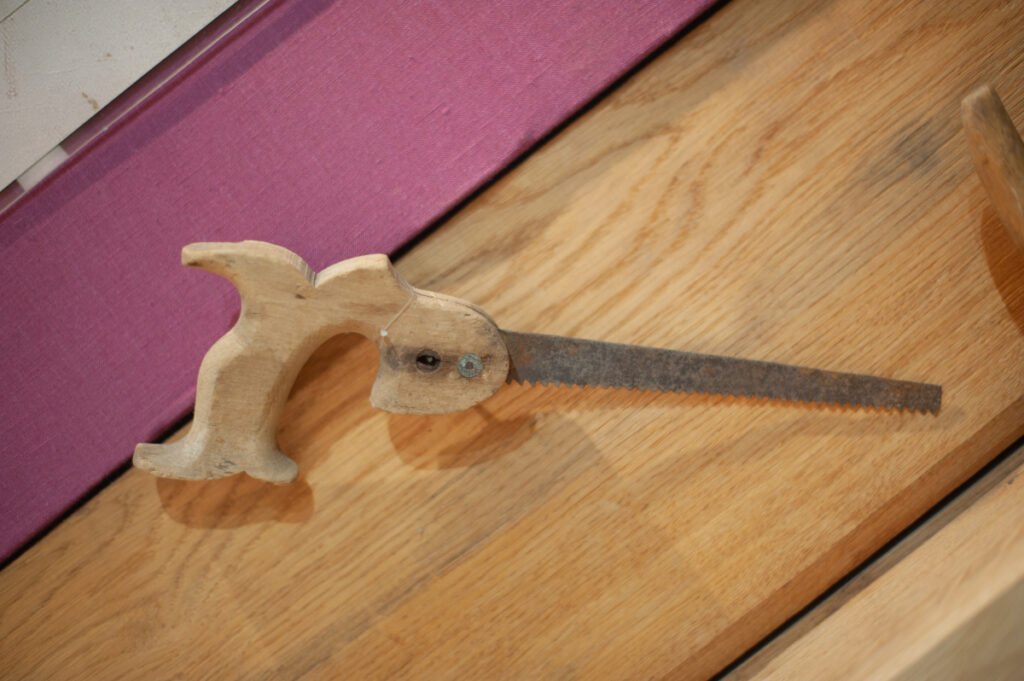
The History & Evolution
Did you know that the Egyptians made the first cross-cut saw for their woodwork? Yes, but these cast iron saws had no handles or teeth. So, they were difficult to hold, and the cuts were rough. Plus, these rusted quickly and had to be polished again and again.
Makers experimented with metals in the 1700s. Alloyed steel blades with wood handles and covers became quite common, and their value and demand went high!
The later 18th-century saws were commercial. So, you can find intricate and branded ones from this era! Galvanized steel blades and refined American-style teeth would also be common. But, they won’t value much due to a modern make.
4 Types of Antique Cross-Cut Saws & Their Values
Back then, people classified cross-cut saws based on their design. So each had a different value as per the strength and cutting efficiency. These types may help you value the saws. So, let’s find out more!
1. Single-Person Crosscut Saw
Just as the name suggests, these saws are small, straight saws with a single handle. They are 3 to 4 feet long but have tapered blades, making them light and handy.
But since they are sharp and sturdy, they are precious and cost around $1500 – 1700.
2. Two-Person Crosscut Saws

These saws can be recognized by their long, 8-9 foot blades, braced handles, and slanted teeth. You’ll also find additional grooves and blade sealants at every 1-foot distance.
These saws are not that thick and sturdy. So, you can expect a rough value of $300 – 400 for them.
3. Felling Crosscut Saws
Felling saws are small, mostly 2-3 feet in size. You’ll get them with curved, flexible bases and single-holed handles. But, they are more stiff and costly, valuing around $600 – 1000.
4. Bucking Crosscut Saws
Bucking saws are just like a regular chainsaw- flat blades with two-holed handles. They usually have a full metal construction with welded plates and handles. So they don’t break easily.
But, Bucking saws might rust and turn brownish with time. So, they are cheaper and cost around $200 – 300.
7 Steps to Identify & Value an Antique Crosscut Saw
You can spot an antique crosscut saw with its teeth, design, and material. But there are 7 more factors that will help you do so!
1. Track the Saw’s Manufacturing Date & Age

Old, handmade saws are rare and precious. After all, that’s what makes them antique!
Old crosscut saws from the 1700s are precious, costing around $1500 – $2000. They are really sturdy and heavy and require 2-3 people for effective cutting.
Saws from the 1800s are also valuable due to their branding and alloyed steel blades. They are also relatively lighter and more precision cut.
But the thin, stainless steel saws from the 1900s are small and blunt. Plus, they are mass-produced. So, they are readily available and cost less than $50 – 100.
Want more help dating your old crosscut saw? Check out the hints below!
How Do You Identify Crosscut Saws from the 1700s?
You can spot the 1700s saws by their crude, hand-polished blades and wide teeth. Most won’t have any handles or anchoring tools. So, look for 2-3 finger loops on the wider seam.
Moreover, they won’t have any branding or date. So, look for waxed joiners, and thick, ¼-inch saw handles to spot these. They will cost around $1500 – 2000.
How Do You Spot Crosscut Saws from the 1800s?
Finding these saws is literally child’s play. Simply look for curved or intricate wooden handles, alloyed steel blades, and small, compact teeth. You can even find stamped medallions and other brand marks, costing $700 – 1000.
How Do You Identify Crosscut Saws from the 1900s?
Look out for galvanized steel blades, minimal handles, and small, sharp teeth to spot these! Most will also have stamped medals and patent numbers that track their age and make. But since they are factory-made, they will be cheaper, costing $50 – 100.
Let’s look at some common saw patent numbers:
| Year | Saw Age | Patent Number | Cross-cut Saw Type | Average Valuation |
| 1896 | 126 years | US854102A | Raker Tooth, Compact Saw | $850 – 900 |
| 1906 | 116 years | US913092A | Variable Tooth Crosscut Saw | $50 – 60 |
| 1905 | 117 years | US836048A | Varying Pitch Saw | $70 – 80 |
Pick etched, slightly pitted, handleless blades for an old make.
2. Check the Handle Materials
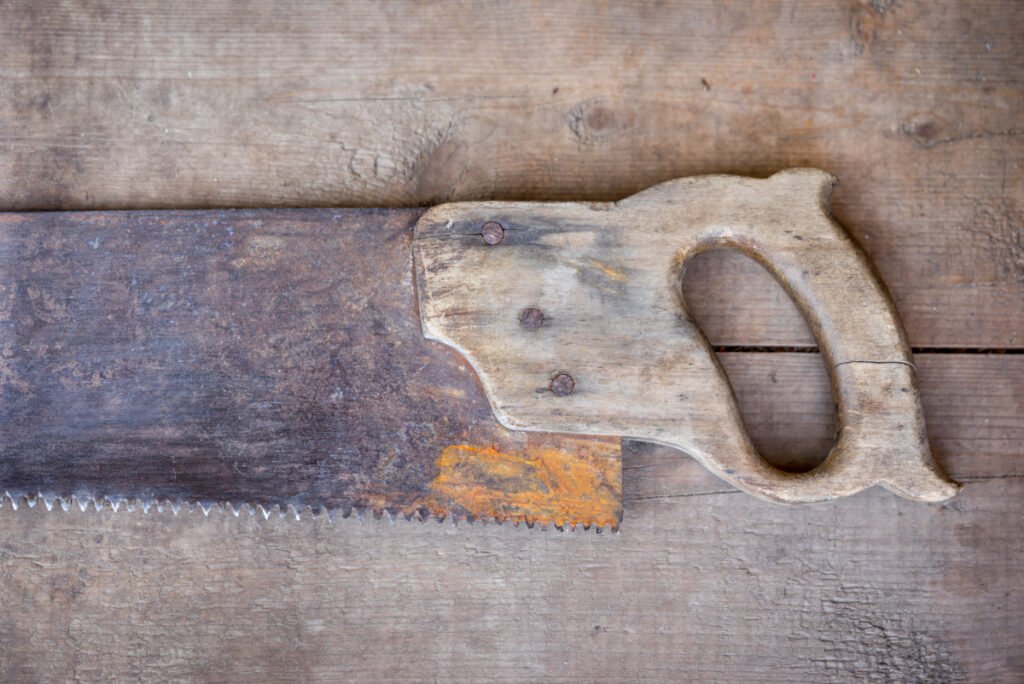
Antique crosscut saws didn’t always have polished handles like today. In fact, most 1700s models had no handles and used 2-3 finger loops for support. And these crude, handmade models have a higher value today!
Then came the wooden and metal handles of the 1800s and 1850s. You’ll get everything from Pine and Oak to Nickel and Brass handles from this era. And these models are precious for their hand molding and polishing.
The later 1900s saws are light and modern, with polished stainless steel handles. But, they are relatively weaker and dent and rust easily, hence less precious!
| Handle Materials | Average Valuation |
| Oak, Pine, Beech Wood | $1700 – 2000 |
| Walnut or Mahogany Wood | $1500 – 1700 |
| Spring Steel or Alloyed Steel | $1000 – 1200 |
| Nickel, Titanium or Brass | $500 – 800 |
| Galvanized or Stainless Steel | $200 – 300 |
| Plastic or Fiber | $50 – 60 |
Look for durable and coveted wood or alloyed steel handle loops for the highest valuation.
3. Check the Blade Materials

Go by this simple rule; the cruder the blade, the higher the saw value! Most 1700s saws are quite precious because of their hand-cut stone blades with extra microliths and bones for support. You can even get some royal-origin copper saws from the same era.
In contrast, modern saws after the Iron Age are mostly metal. So, they are more functional and have raked Cast Iron or steel blades. But, such machine-pressed blades are common and might fetch only $300 – 700.
Let’s look at some common vintage crosscut saw blade materials:
| Blade Materials | Average Valuation |
| Stone + Microlith | $1700 – 2000 |
| Copper and Bronze | $1000 – 1200 |
| Raked Cast Iron | $800 – 900 |
| Alloyed Steel | $400 – 600 |
| Stainless Steel | $200 – 300 |
Avoid buying saws with greenish copper or oxidized blades as they might fetch a lower value.
4. Analyze the Saw Tooth Shape

Naturally, the plain, slanted crosscut teeth earn a high value of $800 – 900. You can even look for compact, uniform spacing and small bevels for a better value.
Contrary to this, newer crosscut teeth are more curved, elongated, and mostly machine-shaped. So, they have a low value of $100 – 150. You can get them in stiffer Perforated or Champion tooth forms.
Here are some vintage crosscut saw tooth types for your reference:
| Tooth Shape | Average Valuation |
| Plain Tooth | $800 – 900 |
| Champion Tooth | $120 – 150 |
| M – Tooth | $100 – 120 |
| Lance Tooth | $100 – 150 |
| Great American Tooth | $200 – 250 |
| Perforated Lance Tooth | $150 – 160 |
Chipped or Cracked lance tooth saws might look like aged Champion tooth ones. So, you must flash a light and check the teeth level before purchase.
5. Check the Branding
Branded cast-iron ‘Disston’ or ‘Stanley’ crosscut saws naturally fetch thousands of dollars globally. So, to check if a saw is branded, you must check its medallions, dates, and marks. You can also look for etched blades and strong screwed joints to spot them.
These saws can also have foreign manufacturing and polishing. So, exotic wood handles, lacquers, and orange stains would also be common.
Want to know more? Check out these antique crosscut saw brands for reference:
| Crosscut Saw Name | Manufacturer | Type of Crosscut Saw | Average Valuation |
| Keystone Champion 70” | Disston | 2-man Wall Decor Saw | $300 – 500 |
| Logging Crosscut Saw 48” | E.C Atkins | Straight, 1-man Saw | $150 – 200 |
| TPI Large Etch | Simmonds | Crosscut Handsaw | $150 – 200 |
| 8-point Crosscut 26” | Stanley | Carpenter Crosscut | $100 – 150 |
6. Assess the Condition
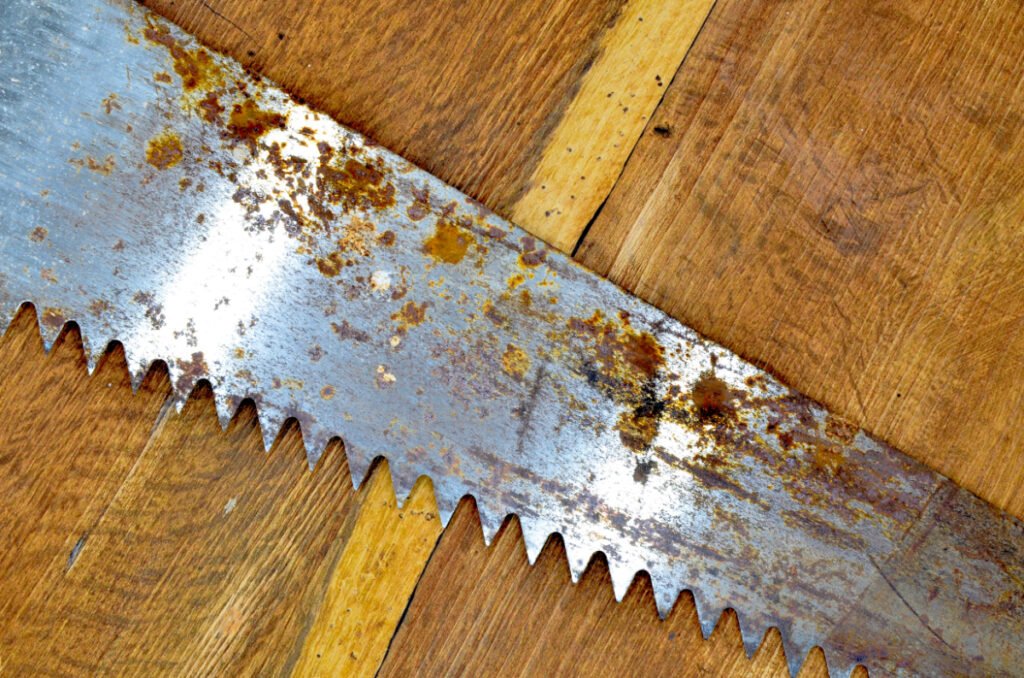
Have you seen antique saws with rusted blades or chipped handles? Well, you better avoid them as they can lower your valuation by 30-40%.
Antique collectors always pick crosscut saws with thick, straight blades for better value. So, saws with broken teeth, cracked handles, or finger loops will be cheaper.
Similarly, old saws with discolored or mold-affected handles will be low-cost, at $30 – 40.
Rinse your old crosscut saws with anti-rust solutions to save them from rust and fungus.
7. Analyze the Saw Mechanism
Thick, draw-stroke saws, which you pull towards yourselves while cutting, are old and precious. They even have Japanese or Egyptian make and some regional motifs on their handles. So they are intricate and cost around $600 – 700.
In contrast, Western thrust saws, the ones you push away while cutting, are new and modern. So they are relatively cheaper, costing $200 – 300.
Can You Still Use Antique Crosscut Saws?
Yes, you can use old crosscut saws for small woodwork. But be sure to double-check its teeth for any visible damage or rust. Also, avoid using it for heavy jobs as its old blade might crack and devalue your piece.
Can You Lubricate an Antique Crosscut Saw?
Yes, you can lubricate your antique crosscut saws with typical Orange-sol or Diesel oil products. Just make sure to sand it gently to preserve its original finish.
How Do You Store Antique Crosscut Saws?
Store your antique crosscut saws horizontally in a dry room. If possible, cover them with newspaper or a waterproof sheet to reduce moisture and fungus. You can also coat them with WD-40 lube to prevent rust.
Antique crosscut saws are old and precious, thanks to their handmade handles and blades. But you can also explore more blade materials like copper, steel, and iron for good returns. Or, you can simply pick wooden or steel-felling crosscut saws for high value!
As seen above, branded and sturdy crosscut saws are still in demand! But did you know that antique products made from such saws are valuable too? Be it rocking chairs, sleds, trunks, or dressers, you name it, and you have it! Join me, and I’ll tell you more!
Note: This article is intended for informational, educational, and entertainment purposes only. Some images are illustrative and may not represent actual brands, products, or related entities. All trademarks, product names, brand logos, packaging, and other intellectual property referenced remain the exclusive property of their respective owners. Any brand mentions or references are provided solely for descriptive and educational context and do not imply any formal or commercial association.









